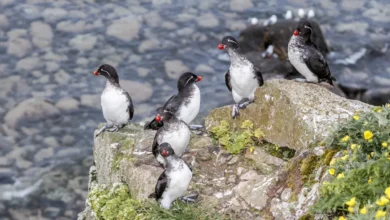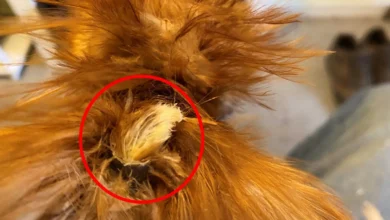The Brown-mandibled Aracaris (Pteroglossus mariae) is a South-American aracari that occurs naturally in the forests south of the Amazon river in eastern Peru and western Brazil as far as the river Madeira and south into adjacent areas of Bolivia.
It is often treated as a sub-species of Ivory-billed Aracari (Pteroglossus azara).
Description
The Brown-mandibled Aracaris has a black crown with a chestnut head, nape (back of the neck) and throat. The rump is red. There is a broad red band across the breast with black below separated from a yellow belly by a thin red band. The upper bill is ivory colored and the lower bill is orange-brown.
Aracaris generally roost socially throughout the year. Up to five adults and their fledged offspring sleep in the same hole with their long tails folded over their backs.
Breeding
They nest in trees with appropriate hollows, most of which are previously made by woodpeckers. Other hollows are the result of a branch break and ensuing rotting of the heart wood from rain over a period of time.
Both the male and female share the incubation and chick rearing duties. Their eggs are white and elliptical shaped, and are incubated for about 16 days. The newly hatched chicks are blind and naked with short bills and thick pads on their heels to protect them from the rough floor of the nest. Both parents, as well as their previous offspring and/or possibly other adults feed the chicks, which leave the nest after about 6 weeks. The adults continue to feed them for several weeks after fledging.
Aviculture
The active Aracaris require large, planted flights. Aracaris are generally docile and can be kept with smaller birds — but not birds so small that they (or their young) could be considered as prey by these large birds, such as finches. Breeding pairs are best kept alone.
Captive birds may breed in nest boxes with a concave bottom; however, they generally prefer natural nests constructed from palm tree logs, which allows them to dig their nest chambers deeper.
Jerry Jennings, President / Director of Emerald Forest Bird Gardens provides the following input:
“Toucanets and Aracaris … all require the same space. The smallest breeding flight I have used was 4′ x 10′ x 6 feet high and the flights I currently use are 8′ x 12′ x 8 feet high and the newest flights are 8′ x 16′ x 8 feet high.
They need the proper diet, a nest log and the pairs must be compatible. These birds are sensitive to iron in the diet, so should be kept on the Mazuri Low Iron Softbill pellet plus a variety of fruit – all fruits except citrus, pineapple and tomatoes – are OK.
I would start with the easiest, so when you have babies you will feel a sense of accomplishment and want to continue. If you start with a difficult species you will have much less luck and may become discouraged.” (Source: Jerry Jennings, President / Director of Emerald Forest Bird Gardens)
Species Research by Sibylle Johnson
Please Note: The articles or images on this page are the sole property of the authors or photographers. Please contact them directly with respect to any copyright or licensing questions. Thank you.



